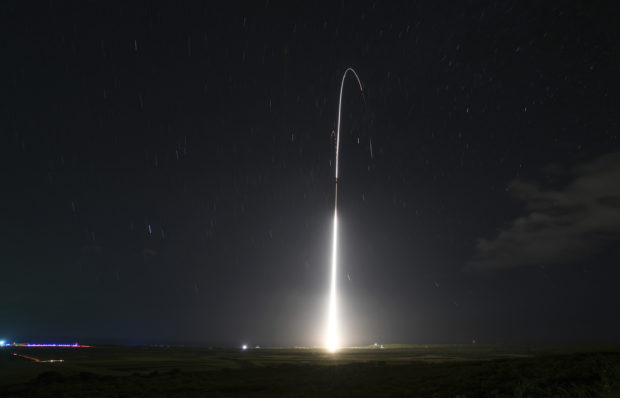New US strategy foresees sensors in space to track missiles

Credit to Author: ggaviola| Date: Thu, 17 Jan 2019 11:57:34 +0000
WASHINGTON — The Trump administration will roll out a new strategy for a more aggressive space-based missile defense system to protect against existing threats from North Korea and Iran and counter advanced weapon systems being developed by Russia and China.
Details about the administration’s Missile Defense Review — the first compiled since 2010 — are expected to be released during President Donald Trump’s visit Thursday to the Pentagon with top members of his administration.
The new review concludes that in order to adequately protect America, the Pentagon must expand defense technologies in space and use those systems to more quickly detect, track and ultimately defeat incoming missiles.
Recognizing the potential concerns surrounding any perceived weaponization of space, the strategy pushes for studies. No testing is mandated, and no final decisions have been made.
Specifically, the U.S. is looking at putting a layer of sensors in space to more quickly detect enemy missiles when they are launched, according to a senior administration official, who briefed reporters Wednesday. The U.S. sees space as a critical area for advanced, next-generation capabilities to stay ahead of the threats, said the official, who spoke on condition of anonymity to disclose details of the review before it was released.
The administration also plans to study the idea of basing interceptors in space, so the U.S. can strike incoming enemy missiles during the first minutes of flight when the booster engines are still burning.
Congress, which ordered this review, already has directed the Pentagon to push harder on this “boost-phase” approach, but officials want to study the feasibility of the idea and explore ways it could be done.
The new strategy is aimed at better defending the U.S. against potential adversaries, such as Russia and China, who have been developing and fielding a much more expansive range of advanced offensive missiles that could threaten America and its allies. The threat is not only coming from traditional cruise and ballistic missiles, but also from hypersonic weapons.
For example, Russian President Vladimir Putin unveiled new strategic weapons he claims can’t be intercepted. One is a hypersonic glide vehicle, which could fly 20 times faster than the speed of sound and make sharp maneuvers to avoid being detected by missile defense systems.
“Developments in hypersonic propulsion will revolutionize warfare by providing the ability to strike targets more quickly, at greater distances, and with greater firepower,” Lt. Gen. Robert Ashley, director of the Defense Intelligence Agency, told Congress last year. “China is also developing increasingly sophisticated ballistic missile warheads and hypersonic glide vehicles in an attempt to counter ballistic missile defense systems.”
Current U.S. missile defense weapons are based on land and aboard ships. Trump and Vice President Mike Pence have both emphasized space-based capabilities as the next step of missile defense.
Senior administration officials earlier signaled their interest in developing and deploying more effective means of detecting and tracking missiles with a constellation of satellites in space that can, for example, use advanced sensors to follow the full path of a hostile missile so that an anti-missile weapon can be directed into its flight path.
Any expansion of the scope and cost of missile defenses would compete with other defense priorities, including the billions of extra dollars the Trump administration has committed to spending on a new generation of nuclear weapons. An expansion also would have important implications for American diplomacy, given long-standing Russian hostility to even the most rudimentary U.S. missile defenses and China’s worry that longer-range U.S. missile defenses in Asia could undermine Chinese national security.
Asked about the implications for Trump’s efforts to improve relations with Russia and strike better trade relations with China, the administration official said that the U.S. defense capabilities are purely defensive and that the U.S. has been very upfront with Moscow and Beijing about its missile defense posture.
The release of the strategy was postponed last year for unexplained reasons, though it came as Trump was trying to persuade North Korea to give up its nuclear weapons.
While the U.S. continues to pursue peace with North Korea, Pyongyang has made threats of nuclear missile attacks against the U.S. and its allies in the past and has worked to improve its ballistic missile technology. It is still considered a serious threat to America. Iran, meanwhile, has continued to develop more sophisticated ballistic missiles, increasing their numbers and their capabilities. /gsg